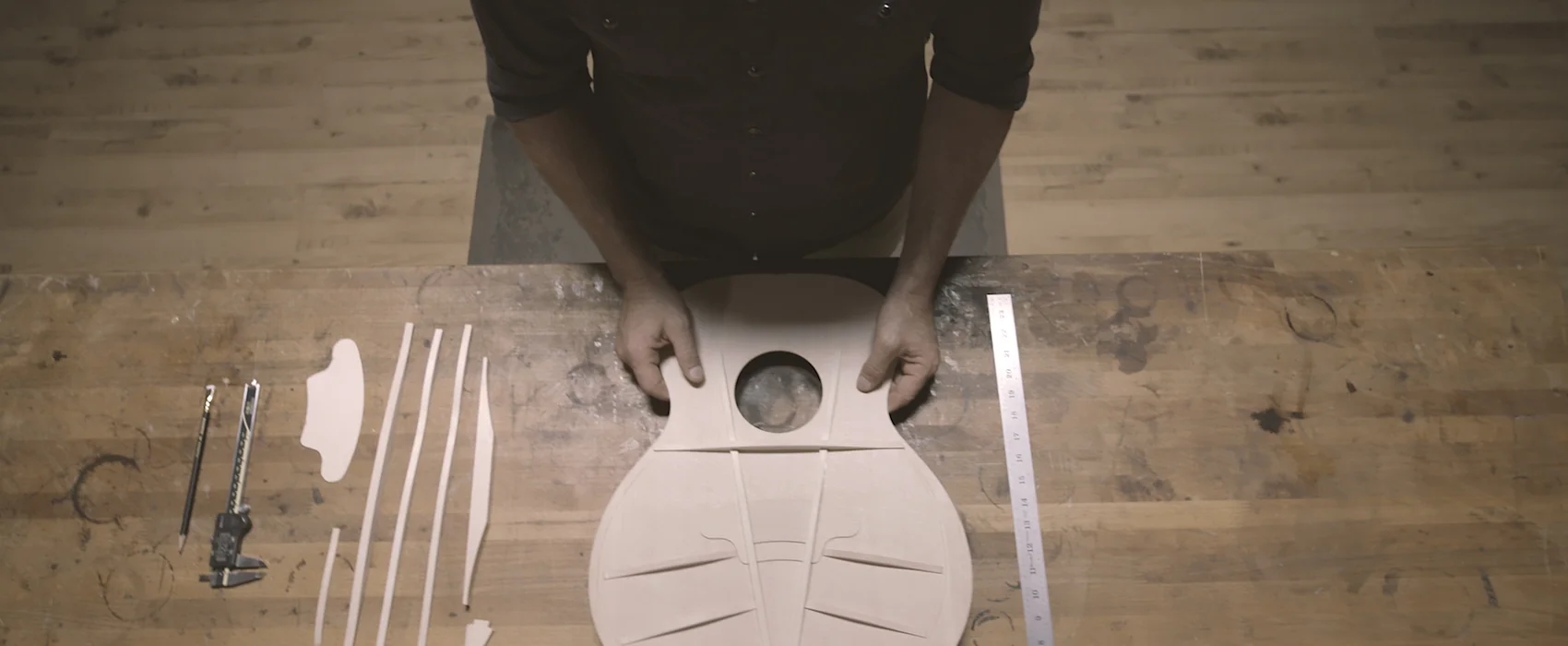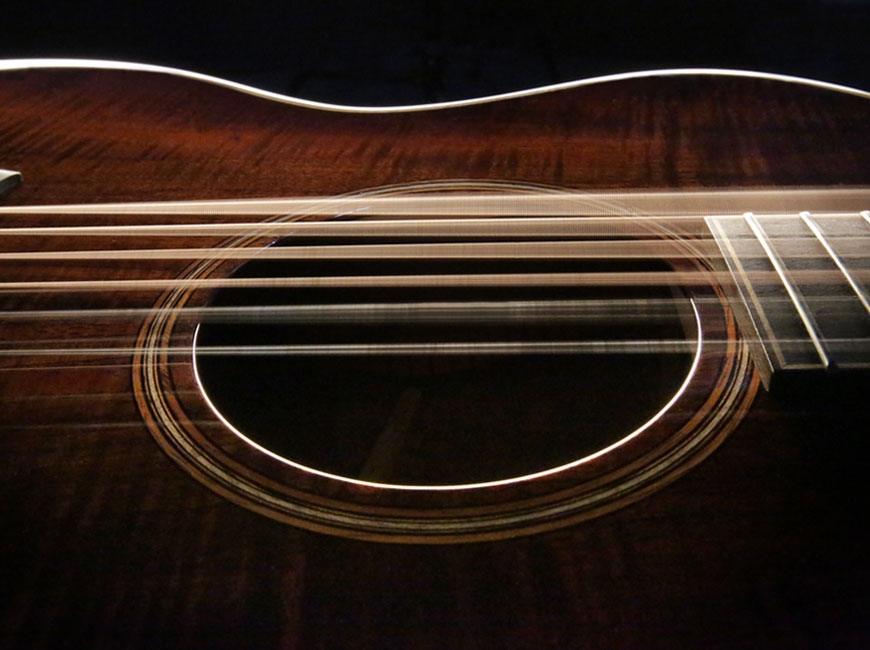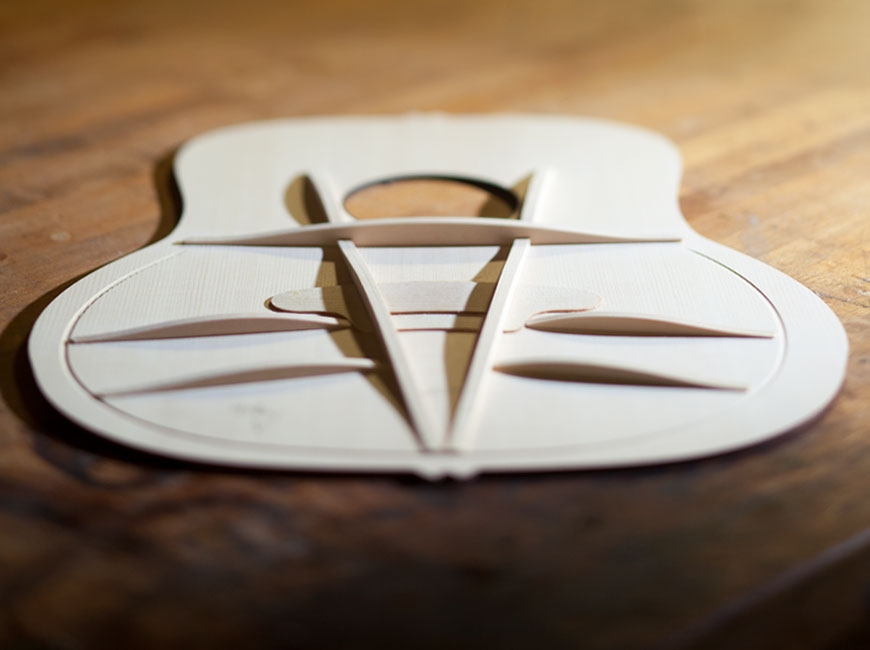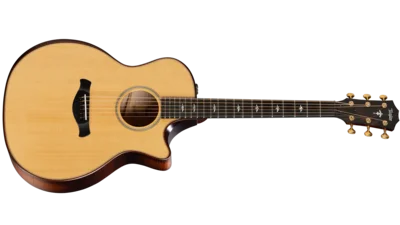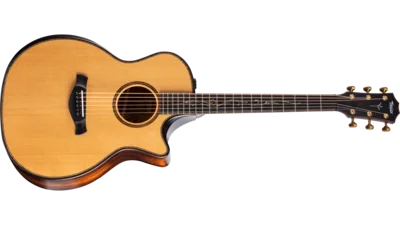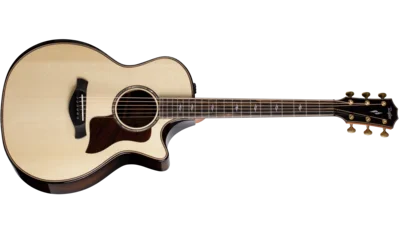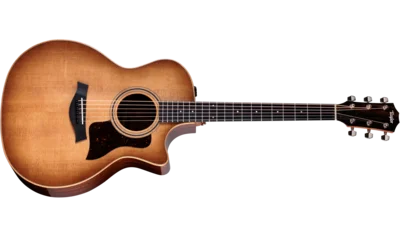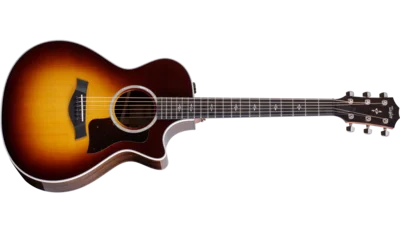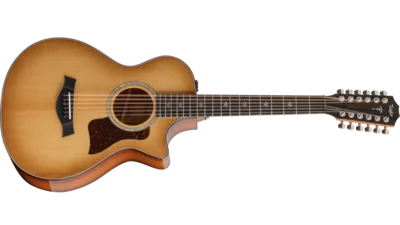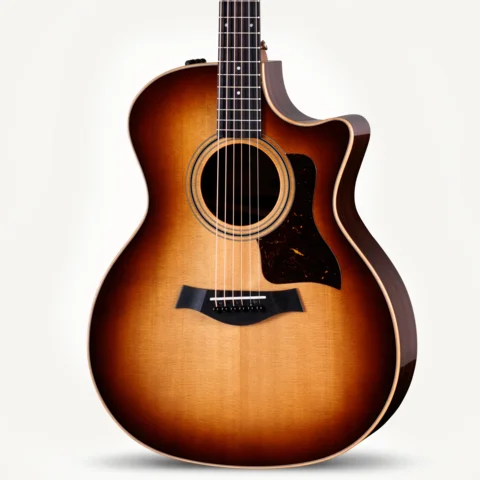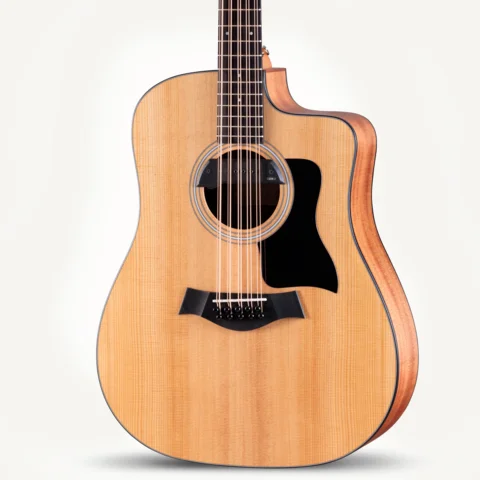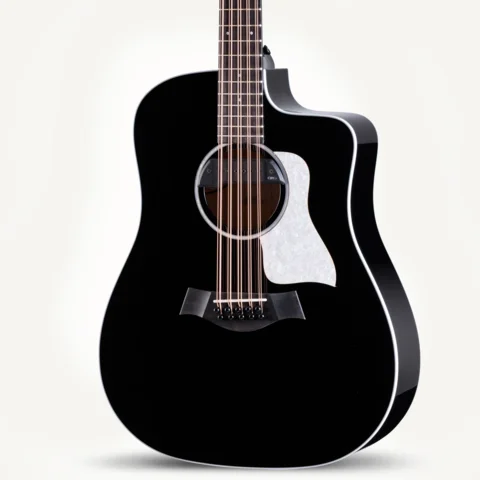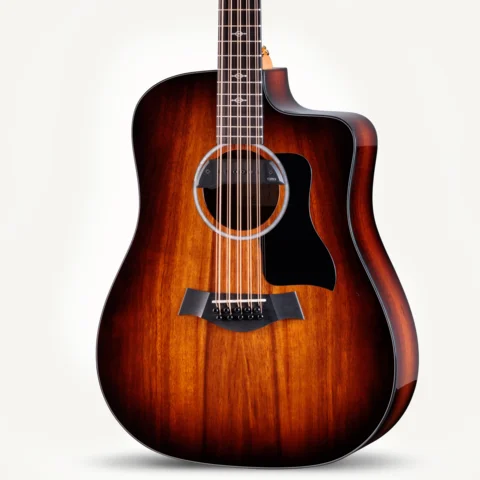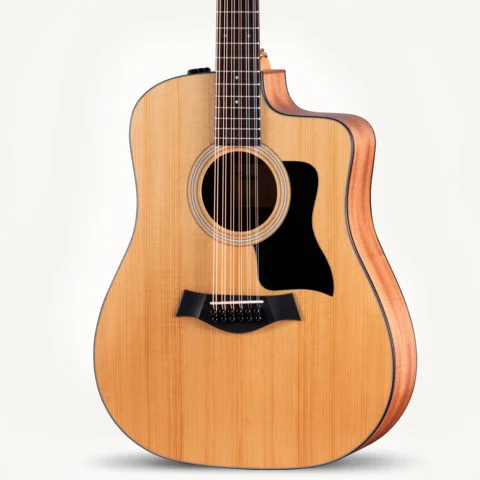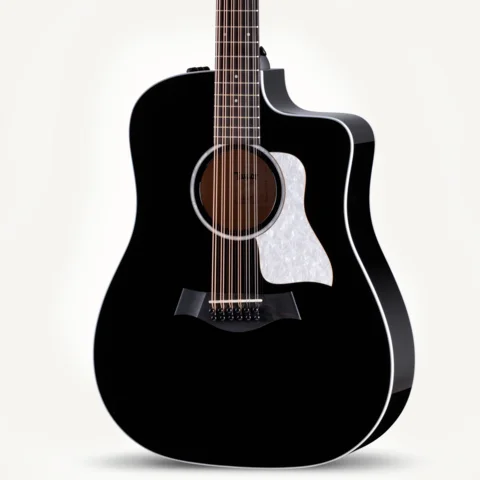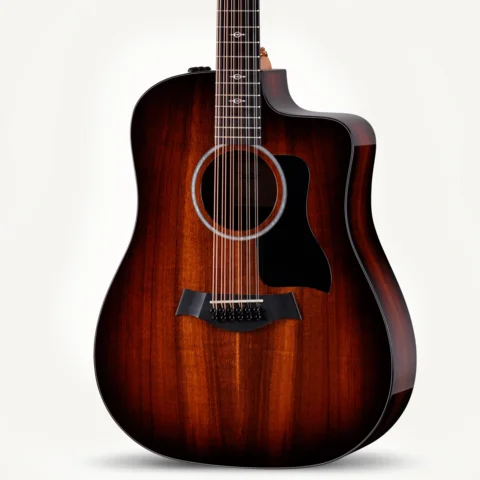

Better Intonation
V-Class bracing makes the top more in tune with the vibrating strings. This eliminates much of the interference that causes some notes to waver and sound slightly out of tune. As a result, notes and chords played anywhere on the neck are more consistent and in tune with each other.
Featured V-Class Guitars
Explore a selection of best-selling guitars equipped with V-Class bracing, including models from the ultra-refined Builder's Edition Collection.






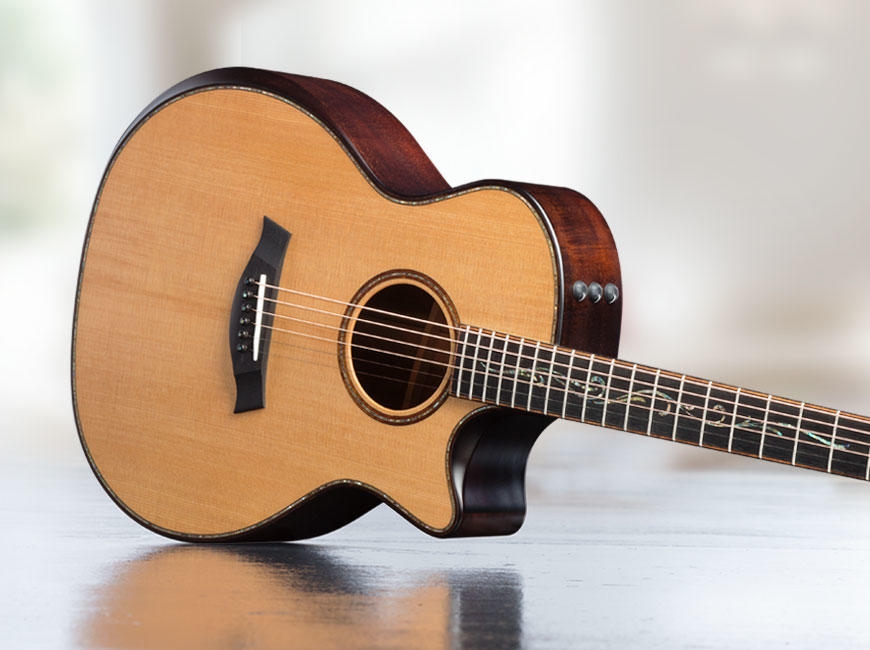
Builder’s Edition
We celebrate the debut of V-Class bracing with Builder’s Edition, a next-level concept guitar developed by master guitar designer Andy Powers. The new V-Class sound is matched by ergonomic body contours that make this the most player-friendly guitar we’ve ever built.
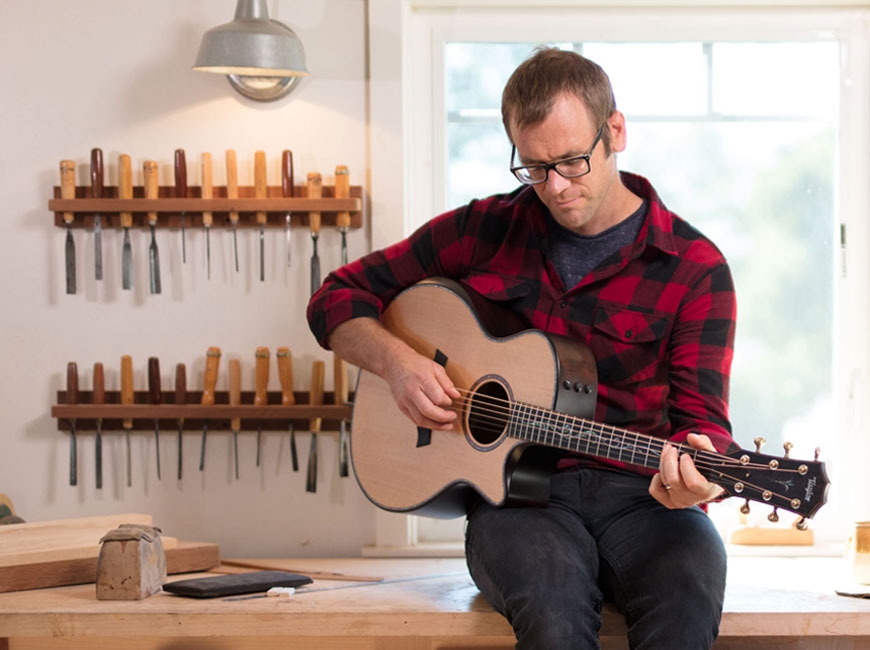
Learn from The Master
Listen as Andy Powers, master guitar designer for Taylor, talks more about V-Class bracing on our exclusive From The Factory podcast.
Where to Find V-Class Guitars
We’ll be introducing V-Class bracing to our standard line throughout 2018. Check with your local Taylor dealer for availability.
Use our dealer locator tool to find the authorized Taylor dealer nearest you.
Contact our experts with your questions about V-Class bracing and guitars.
V-Class Bracing Q & A
Each guitar bracing pattern will have a different set of characteristics and is designed to achieve a different result. V-Class bracing was designed to remove the obstacles that interfere with a guitarist’s expression. Other patterns may achieve other goals, but V-Class bracing is the only design that resolves the tension between sustain and volume while also improving a guitar’s intonation.
Is V-Class bracing as strong as X-bracing?
Yes. A V-Class guitar is no more susceptible to damage than an X-braced guitar, and its design is both strong and responsive. This is how it can produce long-sustaining notes and stronger volume.
Is different glue or bracing material used with V-Class bracing?
The materials used in the construction of a V-Class design are very similar to those used with conventional X-braced guitars.
If V-Class guitars have better sustain, does that mean they’re heavier?
No. Weight is a result of heavier parts, and V-Class guitars don’t use parts that are heavier than any other guitar.
Is V-Class bracing available as an upgrade or as a custom component?
Not yet. New developments like V-Class bracing take time and effort to integrate into Taylor’s product line, so the new pattern will be made available on more guitars as we build the necessary equipment to build them.
Do alternate tunings work on V-Class guitars?
They do! The improved intonation afforded to players by V-Class bracing is not related to altered scale length, fret spacing, or compensation to create a different tuning temperament. This means that alternate tunings will enjoy the same harmonic coherence as standard tuning.
How will a V-Class guitar sound amplified with the Expression System 2?
Because of the uniformity of the notes, the tone will amplify well. It’s a more usable sound. The amplified sound is consistent up the neck. There are no hot spots to contend with.
Do I have to change the way I play on a guitar with V-Class bracing?
Nothing needs to change about the way you play, although the V-Class design tends to enable a more musically expressive range, which leads most players in new creative directions.
How will I recognize a guitar with V-Class bracing when I hear it?
Different players will pick up on different aspects of the V-Class sound. Some will notice the sonic balance first; others will notice the volume, sustain or projection. Many will notice the sound of improved intonation and harmony between the notes, which is a characteristic that is significantly different than other designs.
If I have a V-Class guitar, will I still be able to play with other guitarists?
Yes, and with any other type of musician, since you’re not trying to use a different tuning system. You’re just bringing a better level of harmony to the guitar itself.
Does the improved intonation mean if I use a capo on a V-Class guitar I won’t have to retune?
No, you’ll still want to retune. That’s because of the different physical diameter of each string and how far it has to travel in relation to the others because you’re not able to individually adjust the pressure for each string. Typically when you use a capo, the low strings will be sharp, and the high strings will be pretty close. But it’s not uniform from string to string. It’s just a mechanical problem. When you play notes, you have a much better degree of physical feedback and control, so you tend to even out the amount of pressure you use to fret the strings. You typically don’t press the low strings harder than top ones; you only press a string down until it’s clear. So usually we’ll play a little more in tune than a mechanical clamp.
Besides increased volume and sustain, and improved intonation, does V-Class bracing improve a guitar’s tone in other ways?
Another attribute that players—and especially listeners—will hear is increased projection. Because V-Class bracing creates a more orderly wave form, the guitar is not only louder, it also projects farther without as much volume drop-off over distance as an acoustic guitar normally has. Andy Powers explains why: “Each note has a clearer identity and the notes have more harmonic coherence. In other words, the frequencies the guitar generates agree more with each other. The wavelengths line up with each other in phase — picture wavy lines nestled together traveling the same way — and strengthen each other. Because those waves have the strength of multiples, they can travel farther.”
Why hasn’t anyone thought of V-Class bracing before?
This may be an impossible question to answer, since we can’t know why someone didn’t think of something. But in reflecting on how he conceived of the V-Class design, Andy credits the treasure trove of books and other information resources provided by builders, guitar repair technicians, writers, players and others who have shared their many discoveries about acoustic sound, woodworking, and instrument making over several centuries. Andy’s natural passion and curiosity led him to consume as many of these resources as he could find, which certainly helped inform his thinking about guitar design and synthesize these ideas into something new. His experiences and musical needs as a pro-level player also influenced his thinking. Andy also credits the innovative manufacturing culture of Taylor Guitars, which has provided a supportive environment and tooling resources for ongoing design improvements. Taylor’s production capability also has enabled guitars to be built with incredible precision and on a large scale. This has allowed Andy to explore the outer frontiers of guitar design, push the proverbial envelope, and discover the limitations of existing materials and methods.
























